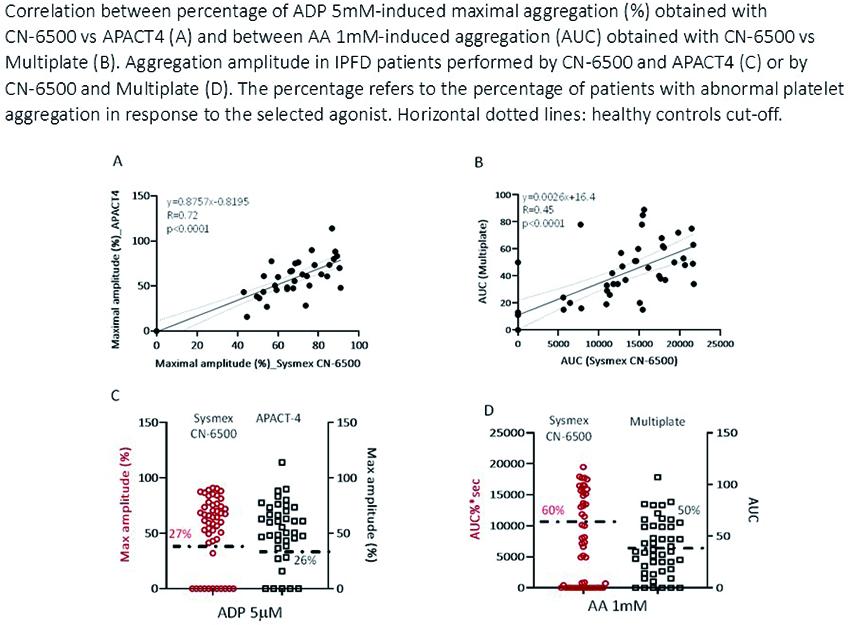29th National Conference of the Italian Society for the Study of Hemostasis and Thrombosis, 2025
Vol. 4 No. s1 (2025)
PO01 | Diagnosis of inherited platelet function disorders by platelet aggregometry using a fully automated coagulation analyzer
E. Falcinelli1, A.M. Mezzasoma1, L. Bury1, R. Martini1, I. Tano1, A. Rechner2, P. Gresele1 | 1Department of Medicine, Section of Internal and Cardiovascular Medicine, University of Perugia, Italy; 2Sysmex Europe, Germany
Publisher's note
All claims expressed in this article are solely those of the authors and do not necessarily represent those of their affiliated organizations, or those of the publisher, the editors and the reviewers. Any product that may be evaluated in this article or claim that may be made by its manufacturer is not guaranteed or endorsed by the publisher.
All claims expressed in this article are solely those of the authors and do not necessarily represent those of their affiliated organizations, or those of the publisher, the editors and the reviewers. Any product that may be evaluated in this article or claim that may be made by its manufacturer is not guaranteed or endorsed by the publisher.
Published: 22 October 2025
38
Views
0
Downloads
Similar Articles
- PO94 | The use of antidepressant drugs and benzodiazepine hypnotics as an unusual risk factor for VTE , Bleeding, Thrombosis and Vascular Biology: Vol. 4 No. s1 (2025)
- PO32 | Effect of the sodium-glucose co-transporter-2 (SGLT2) inhibitors on platelet activation and lipid peroxidation: results of a pilot study , Bleeding, Thrombosis and Vascular Biology: Vol. 4 No. s1 (2025)
- PO61 | ACTN1-related thrombocytopenia and severe hyperhomocysteinemia: a case report , Bleeding, Thrombosis and Vascular Biology: Vol. 4 No. s1 (2025)
- PO95 | Idiopathic thrombocytopenic purpura in tuberculosis , Bleeding, Thrombosis and Vascular Biology: Vol. 4 No. s1 (2025)
- PO33 | Whole blood hypercoagulable profiles in patients with rheumatoid arthritis , Bleeding, Thrombosis and Vascular Biology: Vol. 4 No. s1 (2025)
- PO62 | Management of anticoagulation during extracorporeal circulation in a patient with APS , Bleeding, Thrombosis and Vascular Biology: Vol. 4 No. s1 (2025)
- PO96 | Patient management with arteriovenous thrombotic manifestation and hemorrhagic complications , Bleeding, Thrombosis and Vascular Biology: Vol. 4 No. s1 (2025)
- PO34 | A negative oncologic follow up doesn’t always really mean no cancer: two case report of cancer-associated thrombotic microangiopathy , Bleeding, Thrombosis and Vascular Biology: Vol. 4 No. s1 (2025)
- PO63 | Atypical venous thrombosis in young patient with systemic lupus erythematosus and high-risk APL profile: provoked or not? , Bleeding, Thrombosis and Vascular Biology: Vol. 4 No. s1 (2025)
- Guest Editor: Valerio De Stefano, Course President, 29th National Conference of the Italian Society for the Study of Hemostasis and Thrombosis, 2025 , Bleeding, Thrombosis and Vascular Biology: Vol. 4 No. s1 (2025)
1-10 of 95
Next
You may also start an advanced similarity search for this article.









